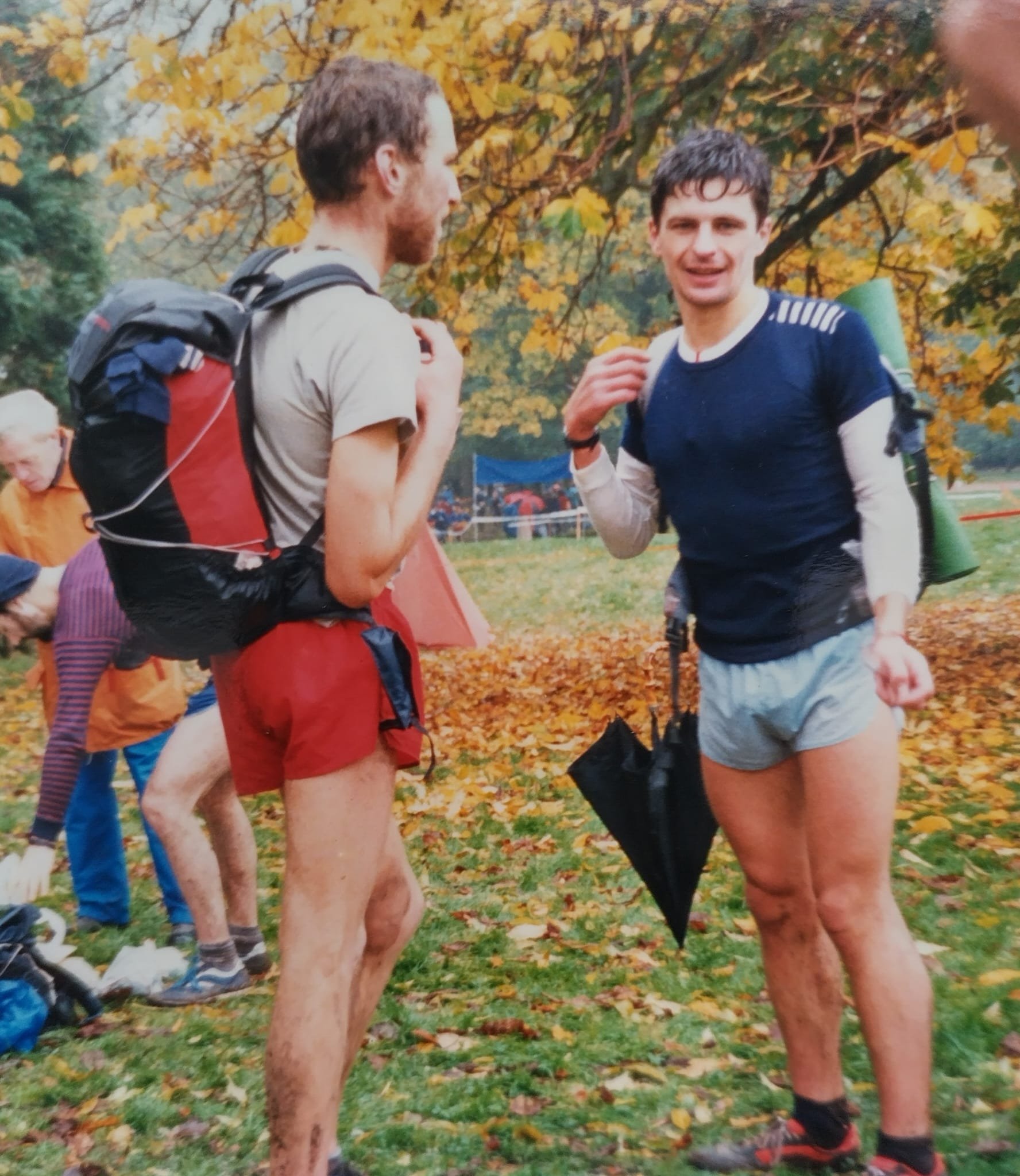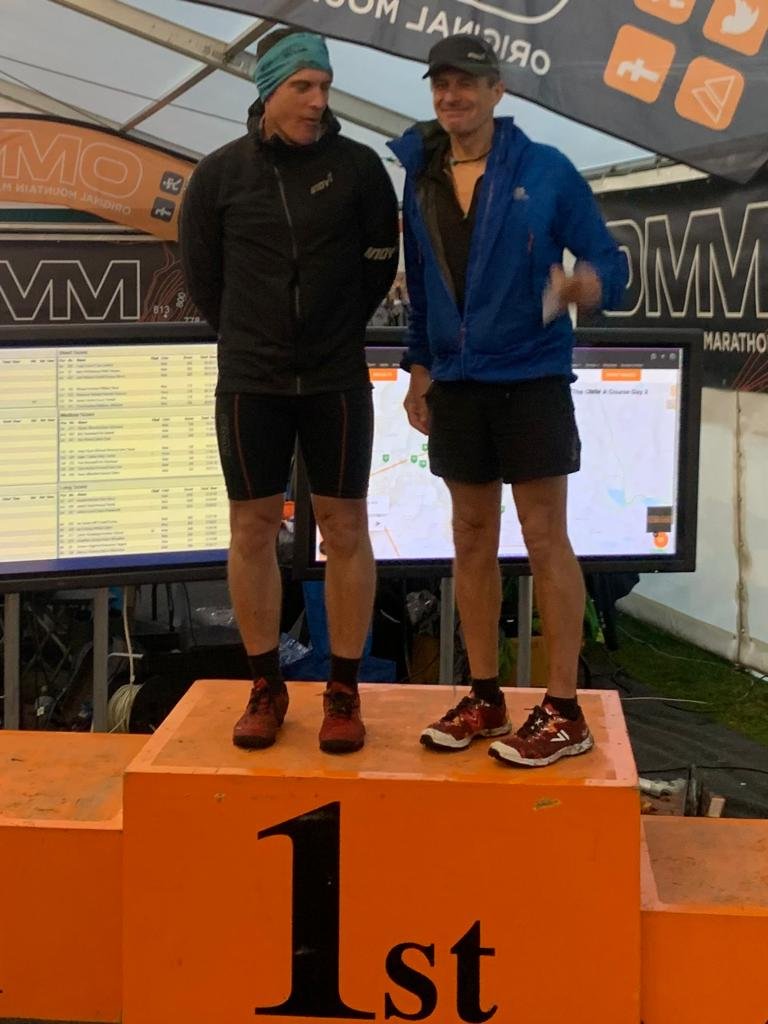40 Years of Mountain Marathons
At the end of October in 1982 I was lining up with my unsuspecting friend and housemate, Chris, to run in a mountain orienteering event called the Karrimor Mountain Marathon (now better known as the KIMM), in a very wet and densely misty Fernworthy Forest on the side of Dartmoor.
Neither of us truly knew what we were getting into, and my memories of the actual run are vague at best - lots of bogs and tussocky grass, driving rain and fog, a superbly placed overnight campsite above the Burrator Reservoir and the knee-deep mud on the final run in to the finish. We finished the B course - I’ve no idea how we placed! - and I was hooked.
The format for the Mountain Marathon, as first suggested by Gerry Charnley, saw teams of two navigating their way around a linear course to a remote overnight campsite where they camped for the night before a second day of navigation back to the finish. The emphasis was one of self-sufficiency, with the teams carrying all the gear required for a night in the wilds on their backs - tents, sleeping bags, food and cooking equipment - and accurate navigation.
The KIMM, and more recently the OMM, always takes place at the end of October - when the clocks go back - which ensures the weather conditions can be truly challenging. The first event took place in 1968 in the Northern Pennines, based at Muker, and the concept proved popular among fell runners, orienteers and other mountain folk, and grew rapidly. By the time I first took part in 1982, there were four linear courses, the A,B and C courses, and the even-more challenging Elite course offering an ‘International flavour’ to the event.
Tim and partner at the 1988 KIMM
The Score Courses (Long, Medium and Short) were added in later years, as well as an additional C course to cope with the huge numbers of runners wanting to take part. The KIMM spawned a number of other similar events including Martin Stone’s LAMM, rightly nicknamed the ‘Rolls-Royce of Mountain Marathons’, always at the wildest and most amazing Highland locations, the Saunders Lakeland Mountain Marathon, the Mourne Mountain Marathon and the Dark Mountains Mountain Marathon, taking the format to its most challenging iteration with teams still carrying all the gear, but through the darkness of a winter night.
Since 1982 I have run in 37 KIMMs/OMMs, most usually competing in the Elite class, as well as taking part in any number of LAMMs, Dark Mountains MMs, ROC MMs and SLMMs, with a variety of partners. I was lucky enough to have been in the 2nd placed team twice at the KIMM (once missing out on the top spot to Derek Ratcliffe and Pete Irwin by less than a minute) both times with Colin Valentine, 3rd three times, and in the top 10 on at least seven other occasions. More recently, I have been part of the 1st Vet team three times.
Two DNFs too, not to mention the adventures of the course abandonment in apocalyptic conditions at the OMM in Borrowdale in 2008. I can honestly say that I have thoroughly enjoyed the event every time, probably more so when the event has been at its most challenging, from the snow covered Northern Lakes in 1992 to the Howling Howgills in 1998 when I was nearly struck by lightning, the deep trackless heather of the Clyde Muirshield Country Park and the wild weather that seems to have been a constant hallmark of the Galloway Hills.
So how has it all changed? Undoubtedly, the equipment we have forty years on from my first foray onto Dartmoor is lighter, stronger and way more resilient than it was back in the day. The KIMM, and latterly the OMM, have been important test-beds for developing new generations of lightweight gear seen across the outdoor world. Improvements in technology have changed the event too, with electronic timing replacing analogue clocks, the ubiquitous dibbers replacing punched cards to record finding the controls, and GPS trackers to follow competitors as they navigate their way around their various routes.
One consequence of the increased reliance of technology is the placement of the overnight campsites - once upon a time, the mid-way campsite would have been truly remote, often tucked well away from the nearest road, usually with a sack-cloth surrounded trench for a toilet. 1990’s memorably wild campsite, placed at 700m in Coire nan Cat, below the crags of Stuc an Lochain was truly a wilderness location! Today’s overnight campsites generally have both road access and Tardis toilets, which must give organisers peace of mind on several counts.
1st Vets, A Class at the OMM, 2022
Maps are clearer and more resilient; lightweight, quickly prepared and highly nutritious food is more readily obtainable (no more noodles, soup and cous-cous!); the Walshies of days gone by have given way to a vast array of Inov-8s, Scarpas, Hokas, VJs and others (though their grip on wet grass and rock seems to have improved little!).
Despite all the changes in gear and technology, the challenge remains essentially the same - to cover two days worth of rough mountain terrain quickly and efficiently continues to demand the highest levels of skill in mountain navigation, as well as the strength of character to endure the worst of the weather, the self sufficiency to camp out in a cold, wet and dark remote location and the fitness to cover the ground carrying the equipment all this requires.
It tests the kit too - tents and rucksacks need to be small, light and strong, clothing and sleeping kit need to be warm even when damp, and cooking gear needs to be light yet to provide enough heat to supply the needs to two hungry runners for 36 hours or more. The number of DNFs at the recent OMM in Langdale gives ample evidence that the event remains true to Gerry Charnley’s original challenge.
After forty years-worth of KIMMs and OMMs (not to mention LAMMs, SLMMs, DMMMs and the rest!) I have no intention of hanging my shoes up, but am already looking forward to whatever next year’s OMM (in Snowdonia?) can throw at us!
Tim Laney
Tim Laney is a long-time mountaineer, fell- and ultra-runner with 40 years of mountain marathons behind him, as well as recent completions of the Tor des Geants, Spine and Dragon's Back. He runs regularly with Bath Bats, and is old enough to know better.

